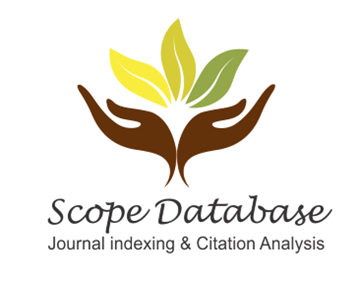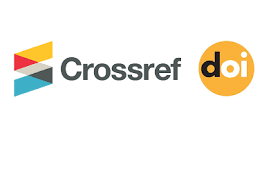TREINAMENTO DE MINDFULNESS- EFEITO EM ADULTOS COM TDAH E SINTOMAS DEPRESSIVOS E O PAPEL DAS TECHNOLOGIAS DIGITAIS
DOI:
https://doi.org/10.47820/jht.v2i3.39Palavras-chave:
sintomas de depressão. Esta revisão de literaturaResumo
Hoje em dia, mais e mais pessoas enfrentam sintomas de depressão. Esta revisão de literatura enfoca adultos com TDAH e sintomas depressivos e apresenta a técnica terapêutica de mindfulness e seus benefícios. O objetivo do artigo era adicionar outro método para reduzir os sintomas de pessoas que sofrem com essas dificuldades em suas vidas diárias. Ao mesmo tempo, buscou-se também o papel das novas tecnologias na solução do mindfulness, pois desenvolvedores e pesquisadores trabalham todos os dias para fornecer soluções por meio da tecnologia para pessoas que enfrentam distúrbios do desenvolvimento, como o TDAH, ou doenças médicas, como a depressão. A questão de investigação do trabalho foi apresentada e atribui-se o contributo do treino de mindfulness como uma prática alternativa com o eixo principal de deslocar a atenção dos indivíduos para a situação com que se deparam e consequentemente para o máximo possível de consciência ideal e cultivo de emoções positivas . As descobertas identificadas foram muito interessantes, pois foram encontrados mecanismos que foram favorecidos pelo treinamento de mindfulness. As preocupações e os dados da pesquisa levaram à principal conclusão de que de fato a técnica de mindfulness pode ser administrada por terapeutas como forma de reduzir os sintomas vivenciados por adultos com TDAH e depressão.
Downloads
Referências
American Psychiatric Association. (2013). Diagnostic and Statistical Manual of Mental Disorders. Fifth edition (DSM-5). Washington, DC: American Psychiatric Association DOI: https://doi.org/10.1176/appi.books.9780890425596
Anālayo B (2003). Satipaṭṭhāna, the direct path to realization. Windhorse Publications.
Barkley RA, Fischer M, Smallish L, Fletcher K. (2002). The persistence of attention-deficit/hyperactivity disorder into young adulthood as a function of reporting source and definition of disorder. J Abnorm Psychol, 111: 279-89. DOI: https://doi.org/10.1037/0021-843X.111.2.279
Barkley, R. A. (2015). Attention-defcit hyperactivity disorder: A handbook for diagnosis and treatment (4th ed.). New York, NY: Guilford Press.
Bergomi C, Tschacher W, Kupper Z (December 1, 2015). "Meditation Practice and Self-Reported Mindfulness: a Cross-Sectional Investigation of Meditators and Non-Meditators Using the Comprehensive Inventory of Mindfulness Experiences (CHIME)" (PDF). Mindfulness. 6 (6): 1411–1421. DOI: https://doi.org/10.1007/s12671-015-0415-6
Britton, Willoughby B. (2019). "Can mindfulness be too much of a good thing? The value of a middle way". Current Opinion in Psychology. 28: 159–165. DOI: https://doi.org/10.1016/j.copsyc.2018.12.011
Caye A, Spadini AV, Karam RG, et al. (2016). Predictors of persistence of ADHD into adulthood: a systematic review of the literature and meta-analysis. Eur Child Adolesc Psychiatry, 25: 1151-9. DOI: https://doi.org/10.1007/s00787-016-0831-8
Caye A, Swanson JM, Coghill D, Rohde LA. (2019). Treatment strategies for ADHD: an evidence-based guide to select optimal treatment. Mol Psychiatry, 24(3):390–408. DOI: https://doi.org/10.1038/s41380-018-0116-3
Deberdt W, Thome J, Lebrec J, et al. (2015). Prevalence of ADHD in nonpsychotic adult psychiatric care (ADPSYC): a multinational cross-sectional study in Europe. BMC Psychiatry, 15: 242. DOI: https://doi.org/10.1186/s12888-015-0624-5
Fayyad J, De Graaf R, Kessler R, et al. (2007). Cross-national prevalence and correlates of adult attention-deficit hyperactivity disorder. Br J Psychiatry, 190: 402-9. DOI: https://doi.org/10.1192/bjp.bp.106.034389
Gotink RA, Hermans KS, Geschwind N, De Nooij R, De Groot WT, Speckens AE (December 1, 2016). "Mindfulness and mood stimulate each other in an upward spiral: a mindful walking intervention using experience sampling". Mindfulness. 7 (5): 1114–1122.. DOI: https://doi.org/10.1007/s12671-016-0550-8
Gustavsson A, Svensson M, Jacobi F, et al. (2011). Cost of disorders of the brain in Europe 2010. Eur Neuropsychopharmacol, 21: 718-79.
Kabat-Zinn J (2013). Full Catastrophe Living: Using the Wisdom of Your Body and Mind to Face Stress, Pain, and Illness. New York: Bantam Dell.
Karunamuni N, Weerasekera R. (2019). "Theoretical Foundations to Guide Mindfulness Meditation: A Path to Wisdom". Current Psychology. 38 (3): 627–646. DOI: https://doi.org/10.1007/s12144-017-9631-7
Kessler RC, Adler LA, Barkley R, et al. (2005). Patterns and predictors of attention-deficit/hyperactivity disorder persistence into adulthood: results from the national comorbidity survey replication. Biol Psychiatry, 57: 1442-51. DOI: https://doi.org/10.1016/j.biopsych.2005.04.001
Kooi, J., et al. (2019). Updated European consensus statement on diagnosis and treatment of adultADHD. Eur. Psychiatry 56, 14–34. DOI: https://doi.org/10.1016/j.eurpsy.2018.11.001
Kooij JJS, Francken MH. (2010). Diagnostic Interview for ADHD in adults. DIVA Foundation, Netherlands.
Larsson H, Dilshad R, Lichtenstein P, Barker E. (2011). Developmental trajectories of DSM-IV symptoms of attention-deficit/hyperactivity disorder: genetic effects, family risk and associated psychopathology. Journal of Child Psychology and Psychiatry, 52(9): 954-963. DOI: https://doi.org/10.1111/j.1469-7610.2011.02379.x
Lee Y. & Song G. (2014). Genome-wide pathway analysis in attention-deficit/hyperactivity disorder. Neurological Sciences, 35(8): 1189-1196. DOI: https://doi.org/10.1007/s10072-014-1671-2
Li J. & Lee S. (2013). Interaction of Dopamine Transporter Gene and Observed Parenting Behaviors on Attention-Deficit/Hyperactivity Disorder: A Structural Equation Modeling Approach. Journal of Clinical Child & Adolescent Psychology, 42(2): 174-186. DOI: https://doi.org/10.1080/15374416.2012.736355
Liebrenz M, Gamma A, Ivanov I, Buadze A, Eich D. (2015). Adult attention-deficit/hyperactivity disorder: associations between subtype and lifetime substance use: a clinical study. Version 2. F1000Res., 4: 407. DOI: https://doi.org/10.12688/f1000research.6780.1
Miller, F. G., & Lee, D. L. (2013). Do functional behavioral assessments improve intervention efectiveness for students diagnosed with ADHD? A single-subject meta-analysis. Journal of Behavioral Education, 22(3), 253–282. DOI: https://doi.org/10.1007/s10864-013-9174-4
Mindfulness Training as a Clinical Intervention: A Conceptual and Empirical Review, by Ruth A. Baer, available at http://www.wisebrain.org/papers/MindfulnessPsyTx.pdf
Nymberg C, Jia T, Lubbe S, Ruggeri B, Desrivieres S, Barker G, BüchelCet al. (2013). Neural Mechanisms of Attention-Deficit/Hyperactivity Disorder Symptoms Are Stratified by MAOA Genotype. Biological Psychiatry, 74(8): 607-614. DOI: https://doi.org/10.1016/j.biopsych.2013.03.027
Owens, J. S., Holdaway, A. S., Smith, J., Evans, S. W., Himawan, L. K., Coles, E. K., et al. (2018). Rates of common classroom behavior management strategies and their associations with challenging student behavior in elementary school. Journal of Emotional and Behavioral Disorders, 26(3), 156–169. DOI: https://doi.org/10.1177/1063426617712501
Pehlivanidis A, Papanikolaou K, Spyropoulou AC, Papadimitriou GN. (2014). Comorbid ADHD in adult psychiatric outpatients with depressive or anxiety disorders. Int J Psychiatry Clin Pract, 18: 265-71. DOI: https://doi.org/10.3109/13651501.2014.941878
Retz-Junginger P, Rösler M, Giesen LK, Philipp-Wiegmann F, et al. (2012). ADHD: Burden of Disease According to Subtypes in Adult Patients. Psychiatr Prax , 43: 279-82. DOI: https://doi.org/10.1055/s-0035-1552699
Scott-Sheldon, Lori A J; Gathright, Emily C; Donahue, Marissa L; Balletto, Brittany; Feulner, Melissa M; DeCosta, Julie; Cruess, Dean G; Wing, Rena R; Carey, Michael P; Salmoirago-Blotcher, Elena (2020). "Mindfulness-Based Interventions for Adults with Cardiovascular Disease: A Systematic Review and Meta-Analysis". Annals of Behavioral Medicine. 54 (1): 67–73. DOI: https://doi.org/10.1093/abm/kaz020
Soendergaard HM, Thomsen PH, Pedersen E, et al. (2016). Associations of age, gender, and subtypes with ADHD symptoms and related comorbidity in a Danish sample of clinically referred adults. J Atten Disord, 20: 925-33. DOI: https://doi.org/10.1177/1087054713517544
Song D, Jhung K, Song J, Cheon K. (2011). The 1287 G/A polymorphism of the Norepinephrine Transporter gene (NET) is involved in Commission Errors in Korean children with Attention Deficit Hyperactivity Disorder. Behavioral and Brain Functions, 7(12): 1-7. DOI: https://doi.org/10.1186/1744-9081-7-12
Szép, A. & Dantchev, S. & Zemp, M. & Schwinger, M. & Chavanon, M.L. & Christiansen, H. (2021). Facilitators and Barriers of Teachers’ Use of Effective Classroom Management Strategies for Students with ADHD: A Model Analysis Based on Teachers’ Perspectives. Sustainability, 13, 12843. DOI: https://doi.org/10.3390/su132212843
Tang YY, Leve LD. (2016). "A translational neuroscience perspective on mindfulness meditation as a prevention strategy". Translational Behavioral Medicine. 6 (1): 63–72.
Thomas, R., Sanders, S., Doust, J., Beller, E., & Glasziou, P. (2015). Prevalence of attention-defcit/hyperactivity disorder: A systematic review and meta-analysis. Pediatrics, 135(4), e994–e1001.
Thompson, Evan. (2020). Why I Am Not a Buddhist. New Haven and London: Yale University Press. p. 120. ISBN 978-0-300-22655-3. Buddhism has no single, agreed-upon traditional definition of mindfulness. Rather, Buddhism offers multiple and sometimes incompatible conceptions of mindfulness.
Zalsman G, Shilton T. (2016). Adult ADHD: A new disease? Int J Psychiatry Clin Pract, 20: 70-6.
Tang YY, Leve LD. (2016). "A translational neuroscience perspective on mindfulness meditation as a prevention strategy". Translational Behavioral Medicine. 6 (1): 63–72. DOI: https://doi.org/10.1007/s13142-015-0360-x
Thomas, R., Sanders, S., Doust, J., Beller, E., & Glasziou, P. (2015). Prevalence of attention-defcit/hyperactivity disorder: A systematic review and meta-analysis. Pediatrics, 135(4), e994–e1001. DOI: https://doi.org/10.1542/peds.2014-3482
Thompson, Evan. (2020). Why I Am Not a Buddhist. New Haven and London: Yale University Press. p. 120. ISBN 978-0-300-22655-3. Buddhism has no single, agreed-upon traditional definition of mindfulness. Rather, Buddhism offers multiple and sometimes incompatible conceptions of mindfulness.
Zalsman G, Shilton T. (2016). Adult ADHD: A new disease? Int J Psychiatry Clin Pract, 20: 70-6. DOI: https://doi.org/10.3109/13651501.2016.1149197
Angold, A., Costello, E. J., & Erkanli, A. (1999). Comorbidity. Journal of Child Psychology and Psychiatry, and Allied Disciplines, 40, 57–87.
Arnett, J. J. (2000). Emerging adulthood: A theory of development from the late teens through the twenties. American Psychologist, 55, 469– 480. DOI: https://doi.org/10.1037/0003-066X.55.5.469
Angold, A., Costello, E.J., Erkanli, A., 1999. Comorbidity. Journal of Child Psychology and Psychiatry, and Allied Disciplines 40, 57–87. DOI: https://doi.org/10.1111/1469-7610.00424
Beekman, A.T.F., De Beurs, E., Van Balkom, A.J.L.M., Deeg, D.J.H., Van Dyck, R., Van Tilburg, W., 2000. Anxiety and depression in later life: co-occurrence and communality of risk factors. The American Journal of Psychiatry 157, 89–95. DOI: https://doi.org/10.1176/ajp.157.1.89
Young, S., 2005. Coping strategies used by adults with ADHD. Personality and Individual Differences 38, 809–816. DOI: https://doi.org/10.1016/j.paid.2004.06.005
Faraone, S.V., Biederman, J., 1997. Do attention deficit hyperactivity disorder and major depression share familial risk factors? Journal of Nervous and Mental Disease 185, 533
Fischer, M., Barkley, R.A., Smallish, L., Fletcher, K., 2002. Young adult follow-up of hyperactive children: self-reported psychiatric disorders, comorbidity, and the role of childhood conduct problems and teen CD. Journal of Abnormal Child Psychology 30, 463–475 DOI: https://doi.org/10.1023/A:1019864813776
Joiner, T. E., Walker, R. L., Pettit, J. W., Perez, M., & Cukrowicz, K. C. (2005). Evidenced-based assessment of depression in adults. Psychological Assessment, 17, 267–277. DOI: https://doi.org/10.1037/1040-3590.17.3.267
Diler, R. A., Daviss, W. B., Lopez, A., Axelson, D., Iyengar, S., & Birmaher, B. (2007). Differentiating major depressive disorder in youths with attention deficit hyperactivity disorder. Journal of Affective Disorders, 102, 125–130 DOI: https://doi.org/10.1016/j.jad.2007.01.002
Fayyad J, Sampson NA, Hwang I, et al. The descriptive epidemiology of DSM-IV adult ADHD in the World Health Organization world mental health surveys. Atten Defic Hyperact Disord. 2017 DOI: https://doi.org/10.1007/s12402-016-0208-3
Feng, X., Keenan, K., Hipwell, A., Henneberger, A., Rischall, M., Butch, J., et al. (2009). Longitudinal associations between emotion regulation and depression in preadolescent girls: moderation by the caregiving environment. Developmental Psychology, 45(3), 798–808. DOI: https://doi.org/10.1037/a0014617
Nyklícek, I., and Kuijpers, K. F. (2008). Effects of mindfulness-based stress reduction intervention on psychological well-being and quality of life: is increased mindfulness indeed the mechanism? Ann. Behav. Med. 35, 331–340. doi: 10.1007/s12160-008-9030-2 DOI: https://doi.org/10.1007/s12160-008-9030-2
Snyder, H. R. (2013). Major depressive disorder is associated with broad impairments on neuropsychological measures of executive function: A meta-analysis and review. Psychological Bulletin, 139(1), 81–132 DOI: https://doi.org/10.1037/a0028727
The Psychological Corporation. (1997). Wechsler Adult Intelligence Scale (3rd edition) and Wechsler Memory Scale (3rd edition): Technical manual. USA: The Psychological Corporation
Faraone, S.V., Biederman, J., 1997. Do attention deficit hyperactivity disorder and major depression share familial risk factors? Journal of Nervous and Mental Disease 185, 533. DOI: https://doi.org/10.1097/00005053-199709000-00001
Stavridou Th., Driga, A.M., Drigas, A.S., 2021. Blood Markers in Detection of Autism, International Journal of Recent Contributions from Engineering Science & IT (iJES) 9(2):79-86. DOI: https://doi.org/10.3991/ijes.v9i2.21283
Zavitsanou, A., & Drigas, A. (2021). Nutrition in mental and physical health. Technium Soc. Sci. J., 23, 67. DOI: https://doi.org/10.47577/tssj.v23i1.4126
Driga, A.M., Drigas, A.S. 2019 “Climate Change 101: How Everyday Activities Contribute to the Ever-Growing Issue”, International Journal of Recent Contributions from Engineering, Science & IT, (IJES) vol. 7(1), pp. 22-31. https://doi.org/10.3991/ijes.v7i1.10031 DOI: https://doi.org/10.3991/ijes.v7i1.10031
Driga, A.M., and Drigas, A.S. 2019 “ADHD in the Early Years: Pre-Natal and Early Causes and Alternative Ways of Dealing.” International Journal of Online and Biomedical Engineering (IJOE), vol. 15, no. 13, p. 95., doi:10.3991/ijoe.v15i13.11203 DOI: https://doi.org/10.3991/ijoe.v15i13.11203
Stathopoulou, et all 2018, Mobile assessment procedures for mental health and literacy skills in education. International Journal of Interactive Mobile Technologies, (IJIM)12(3), 21-37, DOI: https://doi.org/10.3991/ijim.v12i3.8038
Kokkalia G, AS Drigas, A Economou 2016 Mobile learning for preschool education. International Journal of Interactive Mobile Technologies (IJIM) 10 (4) DOI: https://doi.org/10.3991/ijim.v10i4.6021
Stathopoulou A, Karabatzaki Z, Tsiros D, Katsantoni S, Drigas A, 2019 Mobile apps the educational solution for autistic students in secondary education Journal of Interactive Mobile Technologies (IJIM) 13 (2), 89-101 DOI: https://doi.org/10.3991/ijim.v13i02.9896
Drigas A, DE Dede, S Dedes 2020 Mobile and other applications for mental imagery to improve learning disabilities and mental health International Journal of Computer Science Issues (IJCSI) 17 (4), 18-23
Drigas, A. & Ioannidou, R. E. (2013). Special education and ICT's. International Journal of Emerging Technologies in Learning (IJET) 8(2), 41– 47. DOI: https://doi.org/10.3991/ijet.v8i2.2514
Drigas, A., & Papanastasiou, G. (2014). Interactive White Boards in Preschool and Primary Education. International Journal of Online and Biomedical Engineering (iJOE), 10(4), 46–51. https://doi.org/10.3991/ijoe.v10i4.3754 DOI: https://doi.org/10.3991/ijoe.v10i4.3754
Drigas, A. S. and Politi-Georgousi, S. (2019). Icts as a distinct detection approach for dyslexia screening: A contemporary view. International Journal of Online and Biomedical Engineering (iJOE), 15(13):46–60. DOI: https://doi.org/10.3991/ijoe.v15i13.11011
Lizeta N. Bakola, Nikolaos D. Rizos, Drigas, A. S., 2019 “ICTs for Emotional and Social Skills Development for Children with ADHD and ASD Co-existence” International J. Emerg. Technol. Learn., (IJET) 14(5), 122-131. DOI: https://doi.org/10.3991/ijet.v14i05.9430
Drigas, A. S., and Vlachou J. A., 2016. “Information and communication technologies (ICTs) and autistic spectrum disorders (ASD),” Int. J. Recent Contrib. Eng. Sci. IT (iJES), vol. 4, no. 1, p. 4, https://doi.org/10.3991/ijes.v4i1.5352 DOI: https://doi.org/10.3991/ijes.v4i1.5352
Drigas, A. S., Koukianakis, L, Papagerasimou, Y. (2006) “An elearning environment for nontraditional students with sight disabilities.”, Frontiers in Education Conference, 36th Annual. IEEE, p. 23-27. DOI: https://doi.org/10.1109/FIE.2006.322633
Drigas A., and Koukianakis L. 2006 An open distance learning e-system to support SMEs e-enterprising. In proceeding of 5th WSEAS International conference on Artificial intelligence, knowledge engineering, data bases (AIKED 2006). Spain
Drigas A, Petrova A 2014 ICTs in speech and language therapy International Journal of Engineering Pedagogy (iJEP) 4 (1), 49-54 DOI: https://doi.org/10.3991/ijep.v4i1.3280
Bravou V, Oikonomidou D, Drigas A, 2022 Applications of Virtual Reality for Autism Inclusion. A review Retos 45, 779-785 DOI: https://doi.org/10.47197/retos.v45i0.92078
Chaidi I, Drigas A, 2022 "Parents' views Questionnaire for the education of emotions in Autism Spectrum Disorder" in a Greek context and the role of ICTs Technium Social Sciences Journal 33, 73-91 DOI: https://doi.org/10.47577/tssj.v33i1.6878
Bravou V, Drigas A, 2019 A contemporary view on online and web tools for students with sensory & learning disabilities iJOE 15(12) 97 DOI: https://doi.org/10.3991/ijoe.v15i12.10833
Xanthopoulou M, Kokalia G, Drigas A, 2019, Applications for Children with Autism in Preschool and Primary Education. Int. J. Recent Contributions Eng. Sci. IT (IJES) 7 (2), 4-16 DOI: https://doi.org/10.3991/ijes.v7i2.10335
Chaidi I, Drigas A, C Karagiannidis 2021 ICT in special education Technium Soc. Sci. J. 23, 187 DOI: https://doi.org/10.47577/tssj.v23i1.4277
Chaidi E, Kefalis C, Papagerasimou Y, Drigas, 2021, Educational robotics in Primary Education. A case in Greece, Research, Society and Development 10 (9), e17110916371-e17110916371 DOI: https://doi.org/10.33448/rsd-v10i9.16371
Pappas, M., & Drigas, A. (2016). Incorporation of artificial intelligence tutoring techniques in mathematics. International Journal of Engineering Pedagogy, (IJEP)6(4), 12–16. https://doi.org/10.3991/ijep.v6i4.6063 DOI: https://doi.org/10.3991/ijep.v6i4.6063
Lytra N, Drigas A 2021 STEAM education-metacognition–Specific Learning Disabilities Scientific Electronic Archives 14 (10) DOI: https://doi.org/10.36560/141020211442
Mitsea E, Lytra N, A Akrivopoulou, A Drigas 2020 Metacognition, Mindfulness and Robots for Autism Inclusion. Int. J. Recent Contributions Eng. Sci. IT (IJES) 8 (2), 4-20 DOI: https://doi.org/10.3991/ijes.v8i2.14213
Stavridis S, D Papageorgiou, Z Doulgeri 2017 Dynamical system based robotic motion generation with obstacle avoidance, IEEE Robotics and Automation Letters 2 (2), 712-718 DOI: https://doi.org/10.1109/LRA.2017.2651172
Kastritsi T, D Papageorgiou, I Sarantopoulos, S Stavridis, Z Doulgeri, 2019 Guaranteed active constraints enforcement on point cloud-approximated regions for surgical applications 2019 International Conference on Robotics and Automation (ICRA), 8346-8352 DOI: https://doi.org/10.1109/ICRA.2019.8793953
Stavridis S, Z Doulgeri 2018 Bimanual assembly of two parts with relative motion generation and task related optimization 2018 IEEE/RSJ International Conference on Intelligent Robots and Systems … DOI: https://doi.org/10.1109/IROS.2018.8593928
Stavridis S, P Falco, Z Doulgeri 2020 Pick-and-place in dynamic environments with a mobile dual-arm robot equipped with distributed distance sensors IEEE-RAS 20th International Conference on Humanoid Robots (Humanoids)
Papageorgiou D, S Stavridis, C Papakonstantinou, Z Doulgeri 2021Task geometry aware assistance for kinesthetic teaching of redundant robots IEEE/RSJ International Conference on Intelligent Robots and Systems … DOI: https://doi.org/10.1109/IROS51168.2021.9636209
Kastritsi T, I Sarantopoulos, S Stavridis, D Papageorgiou, Z Doulgeri Manipulation of a Whole Surgical Tool Within Safe Regions Utilizing Barrier Artificial Potentials Mediterranean Conference on Medical and Biological Engineering and Computing …
Stavridis S, D Papageorgiou, L Droukas, Z Doulgeri 2022 Bimanual crop manipulation for human-inspired robotic harvesting arXiv preprint arXiv:2209.06074
Stavridis S, Papageorgiou D, Zoe Doulgeri, 2022, Kinesthetic teaching of bi-manual tasks with known relative constraints, Conference: 2022 IEEE/RSJ International Conference on Intelligent Robots and Systems (IROS-2022) Kyoto, Japan DOI: https://doi.org/10.1109/IROS47612.2022.9981196
Chaidi I, Drigas A 2022 Digital games & special education Technium Social Sciences Journal 34, 214-236 DOI: https://doi.org/10.47577/tssj.v34i1.7054
Doulou A, Drigas A 2022 Electronic, VR & Augmented Reality Games for Intervention in ADHD Technium Social Sciences Journal, 28, 159. DOI: https://doi.org/10.47577/tssj.v28i1.5728
Kefalis C, Kontostavlou EZ, Drigas A, 2020 The Effects of Video Games in Memory and Attention. Int. J. Eng. Pedagog. (IJEP) 10 (1), 51-61 DOI: https://doi.org/10.3991/ijep.v10i1.11290
Drigas, A., & Mitsea, E. (2020). The 8 Pillars of Metacognition. International Journal of Emerging Technologies in Learning (iJET), 15(21), 162-178. https://doi.org/10.3991/ijet. v15i21.14907 DOI: https://doi.org/10.3991/ijet.v15i21.14907
Drigas, A. S., and M. Pappas, 2017. “The Consciousness-Intelligence-Knowledge Pyramid: An 8x8 Layer Model,” International Journal of Recent Contributions from Engineering, Science & IT (iJES), vol. 5, no.3, pp 14-25, https://doi.org/10.3991/ijes.v5i3.7680 DOI: https://doi.org/10.3991/ijes.v5i3.7680
Drigas, A., & Mitsea, E. (2021). 8 Pillars X 8 Layers Model of Metacognition: Educational Strategies, Exercises &Trainings. International Journal of Online & Biomedical Engineering, (IJOE) 17(8). https://doi.org/10.3991/ijoe.v17i08.23563 DOI: https://doi.org/10.3991/ijoe.v17i08.23563
Papoutsi, C. and Drigas, A. (2017) Empathy and Mobile Applications. International Journal of Interactive Mobile Technologies (IJIM)11(3). 57. https://doi.org/10.3991/ijim.v11i3.6385 DOI: https://doi.org/10.3991/ijim.v11i3.6385
Drigas, A. S., & Karyotaki, M. (2019). A Layered Model of Human Consciousness. International Journal of Recent Contributions from Engineering, Science & IT (iJES), 7(3), 41- 50. https://doi.org/10.3991/ijes.v7i3.11117 DOI: https://doi.org/10.3991/ijes.v7i3.11117
Drigas, A. S., Karyotaki, M., & Skianis, C. (2018). An Integrated Approach to Neuro-development, Neuroplasticity and Cognitive Improvement. International Journal of Recent Contributions from Engineering, Science & IT (iJES), 6(3), 4-18. DOI: https://doi.org/10.3991/ijes.v6i3.9034
Drigas A, Mitsea E 2020 A metacognition based 8 pillars mindfulness model and training strategies. International Journal of Recent Contributions from Engineering, Science & IT (IJES) 8(4), 4-17. DOI: https://doi.org/10.3991/ijes.v8i4.17419
Papoutsi C, Drigas A, C Skianis 2021 Virtual and augmented reality for developing emotional intelligence skills Int. J. Recent Contrib. Eng. Sci. IT (IJES) 9 (3), 35-53 DOI: https://doi.org/10.3991/ijes.v9i3.23939
Kapsi S, Katsantoni S, Drigas A 2020 The Role of Sleep and Impact on Brain and Learning. Int. J. Recent Contributions Eng. Sci. IT (IJES) 8 (3), 59-68 DOI: https://doi.org/10.3991/ijes.v8i3.17099
Drigas A, Mitsea E, Skianis C 2021 The Role of Clinical Hypnosis and VR in Special Education International Journal of Recent Contributions from Engineering Science & IT (IJES) 9(4), 4-17. DOI: https://doi.org/10.3991/ijes.v9i4.26147
V Galitskaya, A Drigas 2021 The importance of working memory in children with Dyscalculia and Ageometria Scientific Electronic Archives 14 (10) DOI: https://doi.org/10.36560/141020211449
Chaidi I, Drigas A 2020 Parents' Involvement in the Education of their Children with Autism: Related Research and its Results International Journal Of Emerging Technologies In Learning (IJET) 15 (14), 194-203. DOI: https://doi.org/10.3991/ijet.v15i14.12509
Drigas A, Mitsea E 2021 Neuro-Linguistic Programming & VR via the 8 Pillars of Metacognition X 8 Layers of Consciousness X 8 Intelligences Technium Soc. Sci. J. 26, 159 DOI: https://doi.org/10.47577/tssj.v26i1.5273
Drigas A, Mitsea E 2022 Conscious Breathing: a Powerful Tool for Physical & Neuropsychological Regulation. The role of Mobile Apps Technium Social Sciences Journal 28, 135-158 DOI: https://doi.org/10.47577/tssj.v28i1.5922
Drigas A, Mitsea E, C Skianis 2022 Clinical Hypnosis & VR, Subconscious Restructuring-Brain Rewiring & the Entanglement with the 8 Pillars of Metacognition X 8 Layers of Consciousness X 8 Intelligences. International Journal of Online & Biomedical Engineering (IJOE) 18 (1) DOI: https://doi.org/10.3991/ijoe.v18i01.26859
Drigas A, Karyotaki M 2019 Attention and its Role: Theories and Models. International Journal of Emerging Technologies in Learning (IJET) 14 (12), 169-182 DOI: https://doi.org/10.3991/ijet.v14i12.10185
Drigas A, Karyotaki M 2019 Executive Functioning and Problem Solving: A Bidirectional Relation. International Journal of Engineering Pedagogy (iJEP) 9 (3) DOI: https://doi.org/10.3991/ijep.v9i3.10186
Bamicha V, Drigas A 2022 ToM & ASD: The interconnection of Theory of Mind with the social-emotional, cognitive development of children with Autism Spectrum Disorder. The use of ICTs as an alternative … Technium Social Sciences Journal 33, 42-72 DOI: https://doi.org/10.47577/tssj.v33i1.6845
Drigas A, Mitsea E, C Skianis 2022 Neuro-Linguistic Programming, Positive Psychology & VR in Special Education. Scientific Electronic Archives 15 (1) DOI: https://doi.org/10.36560/15120221497
Drigas A, Mitsea E, Skianis C. 2022 Virtual Reality and Metacognition Training Techniques for Learning Disabilities SUSTAINABILITY 14(16), 10170 DOI: https://doi.org/10.3390/su141610170
Drigas A,. Sideraki A. 2021 Emotional Intelligence in Autism Technium Soc. Sci. J. 26, 80 DOI: https://doi.org/10.47577/tssj.v26i1.5178
Drigas A, Mitsea E, Skianis C.. 2022 Subliminal Training Techniques for Cognitive, Emotional and Behavioural Balance. The role of Εmerging Technologies Technium Social Sciences Journal 33, 164-186 DOI: https://doi.org/10.47577/tssj.v33i1.6881
Bakola L, Drigas A, 2020 Technological development process of emotional Intelligence as a therapeutic recovery implement in children with ADHD and ASD comorbidity. . International Journal of Online & Biomedical Engineering, (IJOE) 16(3), 75-85 DOI: https://doi.org/10.3991/ijoe.v16i03.12877
Drigas A, Bakola L, 2021The 8x8 Layer Model Consciousness-Intelligence-Knowledge Pyramid, and the Platonic Perspectives International Journal of Recent Contributions from Engineering, Science & IT (iJES) 9(2) 57-72 DOI: https://doi.org/10.3991/ijes.v9i2.22497
Bamicha V, Drigas A, 2022 The Evolutionary Course of Theory of Mind - Factors that facilitate or inhibit its operation & the role of ICTs Technium Social Sciences Journal 30, 138-158 DOI: https://doi.org/10.47577/tssj.v30i1.6220
Karyotaki M, Bakola L, Drigas A, Skianis C, 2022 Women’s Leadership via Digital Technology and Entrepreneurship in business and society Technium Social Sciences Journal. 28(1), 246–252. DOI: https://doi.org/10.47577/tssj.v28i1.5907
Mitsea E, Drigas A,, Skianis C, 2022 Breathing, Attention & Consciousness in Sync: The role of Breathing Training, Metacognition & Virtual Reality Technium Social Sciences Journal 29, 79-97 DOI: https://doi.org/10.47577/tssj.v29i1.6145
Drigas A, Papoutsi C, 2021,Nine Layer Pyramid Model Questionnaire for Emotional Intelligence, International Journal of Online & Biomedical Engineering (IJOE) 17 (7) DOI: https://doi.org/10.3991/ijoe.v17i07.22765
Drigas A, Papoutsi C, Skianis, 2021, Metacognitive and Metaemotional Training Strategies through the Nine-layer Pyramid Model of Emotional Intelligence, International Journal of Recent Contributions from Engineering, Science & IT (iJES) 9.4 58-76 DOI: https://doi.org/10.3991/ijes.v9i4.26189
Downloads
Publicado
Como Citar
Edição
Seção
Categorias
Licença
Copyright (c) 2023 Revista Saúde e Tecnologia - JHT

Este trabalho está licenciado sob uma licença Creative Commons Attribution 4.0 International License.
Os direitos autorais dos artigos publicados pertecem à JHT, e seguem o padrão Creative Commons (CC BY 4.0), permitindo a cópia ou reprodução, desde que cite a fonte e respeite os direitos dos autores e contenham menção aos mesmos nos créditos. Toda e qualquer obra publicada na revista, seu conteúdo é de responsabilidade dos autores, cabendo a RECIMA21 apenas ser o veículo de divulgação, seguindo os padrões nacionais e internacionais de publicação.































